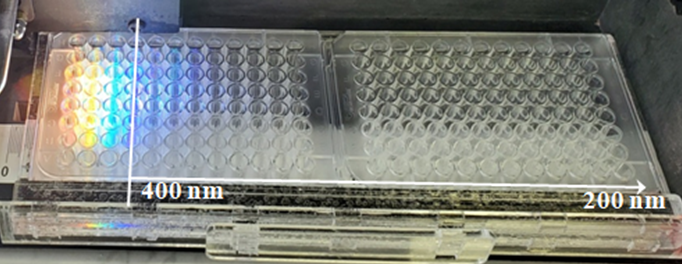
A special UV monochromator was created for bactericidal irradiation of malicious microorganisms in the wavelength range of 400-200 nm. A continuous optical discharge was used as a radiation source. The work contains a description of the device, measurements of the radiation density at the place of biological object samples and a comparison with the results of numerical modeling of radiation propagation in the optical scheme used. The data obtained shows a high level of accuracy in determining the density of radiation arriving at the irradiated microorganisms in the UV range.
continious optical discharge, UV, monochromator, ray tracing, bactericidal irradiation

Специальный УФ-монохроматор создан для бактерицидного облучения вредоносных микроорганизмов в диапазоне длин вол 400-200 нм. В качестве источника излучения использовался непрерывный оптический разряд. Работа содержит описание устройства, замеры плотности излучения в месте облучения образцов биологических объектов и сравнение с результатами численного моделирования распространения излучения в используемой оптической схеме. Полученные данные позволяют говорить о высоком уровне точности определения плотности излучения, приходящего на облучаемые микроорганизмы в УФ диапазоне.
непрерывный оптический разряд, УФ, монохроматор, трассировка лучей, бактерицидное облучение